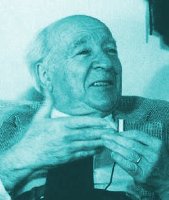March 1, 2013
Location: Janskerkhof 15a (Utrecht), room 202
In this talk, I will introduce a class of non-solvable 2D Ising models with nearest neighbor plus weak finite range interactions, and present two recent rigorous results about the theory at the critical point (joint work with R. Greenblatt and V. Mastropietro):
- Proof of the existence of the scaling limit for the multipoint energy correlations, as the lattice spacing goes to zero and the temperature goes to the critical one, with explicit bounds on the finite-mesh corrections. As expected, the limiting field theory defined by the set of the energy correlations coincides with the energy sector of the conformal field theory (CFT) with central charge c = ½.
- Proof that the finite size corrections to the free energy at criticality are universal, in the sense that they are exactly independent of the interaction. The corresponding central charge, defined in terms of the coefficient of the first subleading term to the free energy, as proposed by Affleck and Blöte–Cardy–Nightingale, is constant and equal to ½, in agreement with the result on the energy correlations.
In order to motivate these results, I will first review what is known or conjectured about the critical theory in the nearest neighbor 2D Ising model and in non-solvable versions of the same model. A digression about the CFT approach to the critical theory will be included.
We will study the ferromagnetic Ising model on random graphs with a power-law degree distribution. If the mean degree is finite (degree exponent τ > 2), then the random graph has a tree-like structure. This observation can be used to identify the thermodynamic limit of local quantities using methods by Dembo and Montanari. This allows us to derive an explicit expression for the pressure. Once this explicit expression is known, we can study the critical behavior of the model. We compute the critical temperature and derive the critical exponents of the magnetization and susceptibility. These exponents depend on the degree exponent τ. This is joint work with Cristian Giardina and Remco van der Hofstad.


